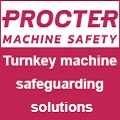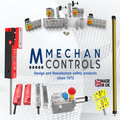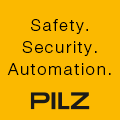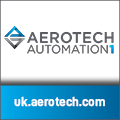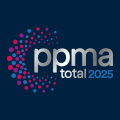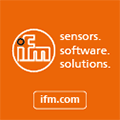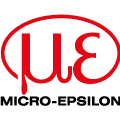
Posted to News on 29th May 2016, 12:39
80 GHz radar: a matter of frequency
With the recent launch of radar instruments in the 80GHz frequency range for liquid level measurement, now is a good time to examine what's behind this new direction in radar technology. So where does it come into its own and what are the benefits of using these new sensors in automated processes for control and inventory? This development signals a brave new world in level measurement, one where radar level measurement can go where it has never gone before. With high-frequency radar level devices on the rise, this is truly an exciting era in automation.
The readiness to use radar level sensors is a function of cost and innovation. Decreased expense has led to increased use of the technology across multiple industries. Microwave radar is a popular format for level measurement, being solid state with no mechanical parts to drift or wear and, more importantly, its immunity to pressure, vapours, temperature, viscosity and density change. Just as computer hardware prices dipped low enough to put a "PC in every home' and a "smartphone in every hand', it is now possible to put the latest 80GHz radar in virtually any vessel and every plant.
Innovations have resulted in a technology that can be both affordable and relevant to even more general process applications. The new generation of modern radar instruments is engineered out of decades of experience, culminating in the best ever optimised antenna designs, with larger dynamic ranges and software algorithms to filter out interference to perform even better. Now that 80GHz radar is available and highly applicable to almost any liquid level measurement, users should get to know and accustomed to the advantages these new contactless sensors provide. The main benefits are produced through better focusing, versatile sizes, enhanced resolution, the consequently easier set up and most importantly - high performance reliability.
So what, in detail, are the main areas of development for 80GHz radar level sensors?
Focusing: This is the primary advantage of 80GHz radar - the one that makes virtually all the other benefits possible. In every contactless liquid measurement, signal focus is crucial to accurate level measurement, and these new instruments emit the most highly focused signals on the market. Plant operators have struggled with less focused radar - and ultrasonic - sensors for decades. The wider beam angle of 26GHz sensors (and still wider 6 to 10GHz sensors before them) made it difficult for the emitted signals to miss agitators, baffles, ladders, heating coils and other vessel internal structures. The reflections from these installations distort and confuse the echo picture to the sensor, forcing users to make (often many) adjustments to follow the true liquid level. These new high-transmission models have narrower beams that completely miss vessel installations, as if they aren't even there. That is welcome news in pharma, chemical and food production, where obtrusive internals are often the norm and space is at a premium. Mounting nearer to vessel sides and taller nozzles, without accuracy loss, is another area of advantage - enabling use of more existing connections, especially in taller vessels. They can also be easily installed to look through process isolation valves; an application area highly desirable in the Oil and Gas processing and storage industries, for example. In summary, the superior focus makes for accurate measurement, minimal adjustment, simpler installation and maximum signal return from the product surface.
Size: Because their focus is so improved, 80GHz sensors have smaller antennas. They feature the world's smallest level radar antenna - smaller than the size of a 1 or €1 coin - so it doesn't require a large horn to focus its beam at the product surface. A compact instrument design and small size also makes a huge impact when it comes to retrofitting. Plants can now integrate the most advanced radar devices into their process without shelling out thousands for vessel modifications. Smaller size and range instruments aren't just good for old vessels, they can also help manufacturers stay nimble and market-responsive. There are more trends in the food, pharmaceutical and chemical industries toward batch production. Batching allows operators to produce profitable, special or seasonal versions and low-volume products, with lower financial investment. Small batches are produced in small vessels, but conventional wisdom says using contactless radar is not possible - due to the small process connections, busy vessel internals and their reduced accuracy over very short measuring ranges. However, contactless, volume measurement is still highly desirable, especially if unaffected by temperature, pressure, viscosity, density and conductivity changes that can be seen in different product formulations. Now, thanks to the compact design and performance of 80GHz radar level sensors, operators no longer have to sacrifice accurate measurement in the name of space.
Resolution: When looking at the picture on a standard definition television next to that of HD TV, the higher resolution delivers a higher-quality image: clearer, sharper and more detailed. Users will see a similar difference switching from lower frequency to high-frequency radar sensors. For example, when the level of a hydrocarbon liquid in a vessel is just starting to fill or empties down very low, lower frequency process radars do not have the resolution to distinguish the different reflections from the product level and the tank bottom, they just see one "echo'. This tells the user the vessel is empty when it isn't, presenting a natural handicap to process efficiency. The new 80GHz devices can measure liquid down to the last millimetre, providing accurate data they can use to optimise their processes. This is not just about small range applications either, the greater resolution is also particularly important for shipbuilders for example, who count on precise level in large cargo and ballast tanks, tens of metres high. It results in better measurement accuracy of every drop of liquid in tanks of all sizes, this is especially important with hydrocarbons in large storage vessels.
Process capable
Getting close to the product in smaller vessels also means increasing the possibility of sensor build up, through splashing, sublimation and condensation on the antenna face. This can result in reduced antenna/signal efficiency, causing reduced measurement reliability. The latest sensors with optimal antenna design, dynamic range, sensitivity and filtering algorithms can handle these challenges with ease. This capability is essential to deliver higher operational reliability, even when the product gets where it shouldn't! There are also units available with certified hygienic fittings for food and pharma industries to ensure thorough cleaning of any sensor process connection.
In summary
High-frequency contactless radar sensors look set to be the next big thing in level measurement across many industries, processes and vessel types. They are the proverbial "giant leap', a marker in time after which the process industry will never be the same. Their excellent focusing makes them well suited for vessels crowded with internals and difficult mounting nozzles; their small size makes them suitable for retrofitting and batch production; and their unrivalled resolution also allows users to get every last drop of capacity from the largest of tanks. The future of level measurement is here. One way to learn more about 80GHz technology, its uses and features is to visit www.vega.com/radar.
Want the latest machine building news straight to your inbox? Become a MachineBuilding member for free today >>
Metior House
Ashdown Business Park
Michael Way
TN22 2DU
UNITED KINGDOM
+44 (0)1444 870055




